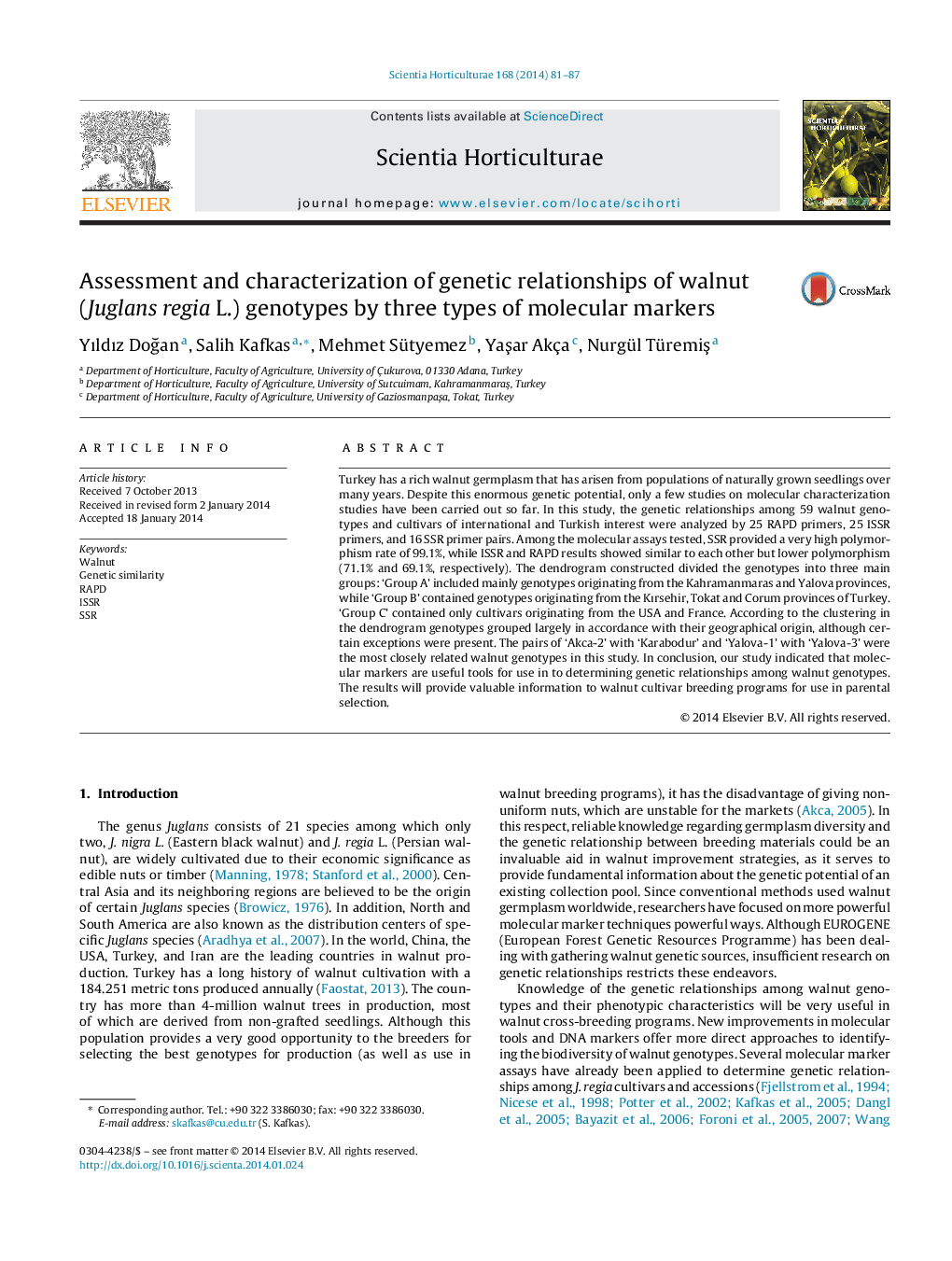| Article ID | Journal | Published Year | Pages | File Type |
|---|---|---|---|---|
| 4566896 | Scientia Horticulturae | 2014 | 7 Pages |
Turkey has a rich walnut germplasm that has arisen from populations of naturally grown seedlings over many years. Despite this enormous genetic potential, only a few studies on molecular characterization studies have been carried out so far. In this study, the genetic relationships among 59 walnut genotypes and cultivars of international and Turkish interest were analyzed by 25 RAPD primers, 25 ISSR primers, and 16 SSR primer pairs. Among the molecular assays tested, SSR provided a very high polymorphism rate of 99.1%, while ISSR and RAPD results showed similar to each other but lower polymorphism (71.1% and 69.1%, respectively). The dendrogram constructed divided the genotypes into three main groups: ‘Group A’ included mainly genotypes originating from the Kahramanmaras and Yalova provinces, while ‘Group B’ contained genotypes originating from the Kırsehir, Tokat and Corum provinces of Turkey. ‘Group C’ contained only cultivars originating from the USA and France. According to the clustering in the dendrogram genotypes grouped largely in accordance with their geographical origin, although certain exceptions were present. The pairs of ‘Akca-2’ with ‘Karabodur’ and ‘Yalova-1’ with ‘Yalova-3’ were the most closely related walnut genotypes in this study. In conclusion, our study indicated that molecular markers are useful tools for use in to determining genetic relationships among walnut genotypes. The results will provide valuable information to walnut cultivar breeding programs for use in parental selection.
